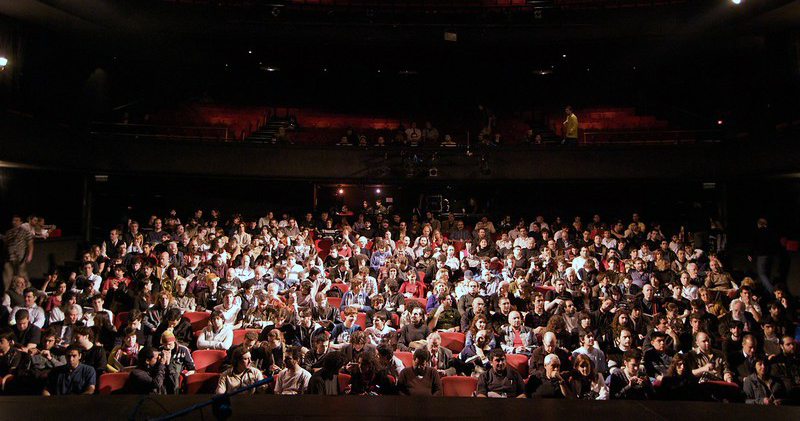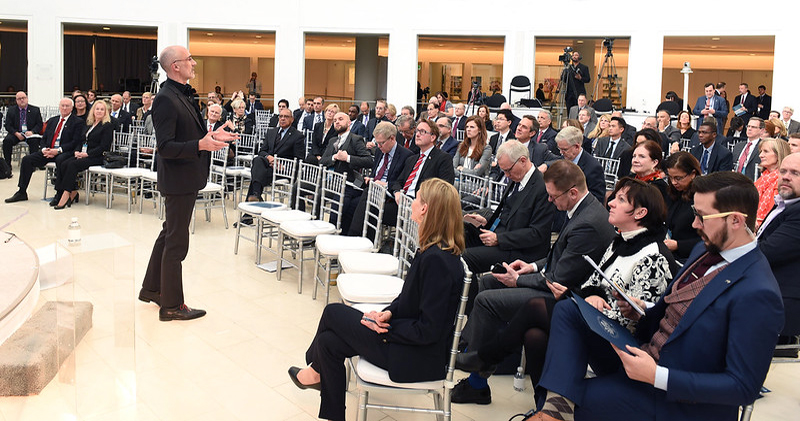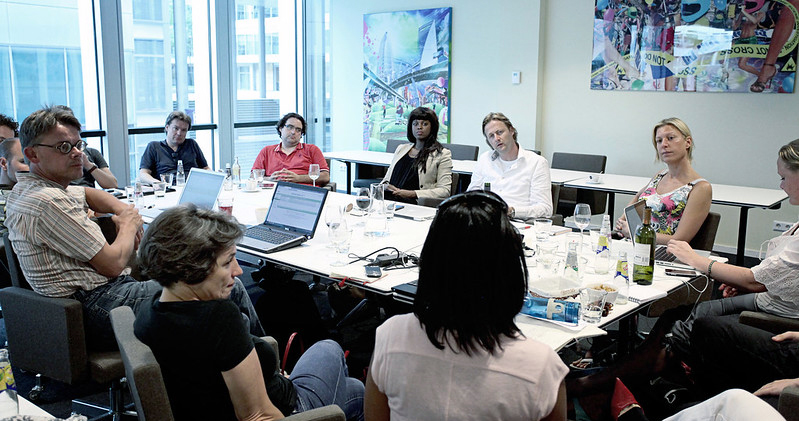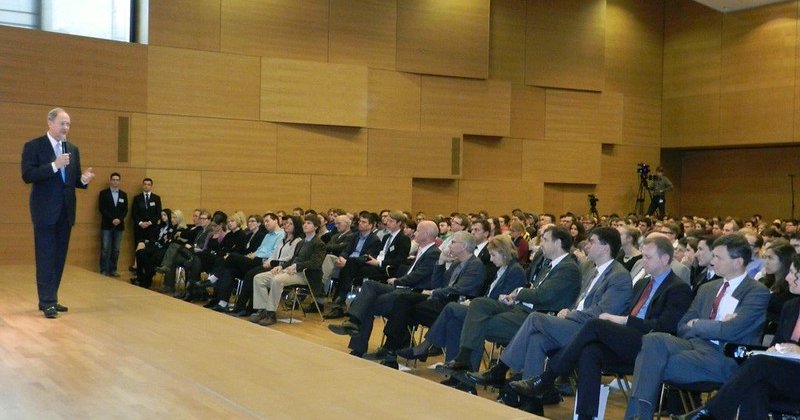Appendix
Scenes audio
| PERSONAJE | Worrying about infants | Worrying about children | Worrying about family members | Worrying about health |
|---|---|---|---|---|
| Character 1 (PJ1) | Presenter | Presenter | Presenter | Presenter |
| Character 2 (PJ2) | Tertullian | Tertullian | Tertullian | |
| Character 3 (PJ3) | Tertullian | Tertullian | Tertullian |
Worrying about infants
PJ1: Let’s start the debate on caring for babies. We’ll start by trying what a baby can and can’t eat, if that’s okay with you.
PJ2: I was looking forward to this topic, since it is something that parents worry about and sometimes they do not know if they do the right thing or not regarding the care of their children, it could be worrying in some cases due to the Intake of inappropriate food at that stage, what do you think?
PJ3: I think the same, during this stage, you have to take into account the things that you can eat and those that cannot, look at the portions and times of the day, and well then… and things like clothing, to avoid us Put 30 washing machines if I spit something out lol.
PJ2: man, you don’t need to be so alarmed either! It doesn’t matter to put extra washing machines, it’s normal when you have babies.
Pj3: Ya… ya… well, but the milk stains keep bothering… and they smell really bad!
PJ1: Okay, enough, let’s start the debate in a serious and correct way, let’s not focus on the spots… Haha. So what do you think they can and can’t eat?
PJ2: I understand that the typical, breast milk or bottle, some soup… baby food… some vegetables would also be fine, right?
PJ3: Man, if you are a newborn, only milk and to be able to be maternal, and in the event that you cannot give breast milk for any reason, you should use a bottle.
PJ1: Besides, it is not advisable to give them anything other than milk since they are very small.
PJ2: Ah well, I thought we were talking about older babies…
PJ1: Nono, in this case we focus on “small” babies, to put it in some way, almost newborns… And in the case of the bottle, especially so that our Spectators do not panic, make sure that the baby suckles properly, and that no air enters the bottle itself.
PJ3: Yes, for the latter, you have to see that the baby is well inclined and that’s it.
PJ2: And the final burp? Do you have to do it yes or no? I always hope that it does Haha.
PJ3: God… Haha I wish they didn’t, but well at least that way you make sure everything is fine.
PJ1: It is not obligatory, do not confuse the spectators Haha, but hey, they feel better after having blown the air.
PJ3: Well, typical, right? You put it on the shoulder and ale!
PJ2: Neither ¨and ale… ¨ is to pat him gently and wait for him to release it. (pause).
PJ1: We have just received a report to Production on the number of babies who need to be hospitalized for causes such as a common cold and the truth that so far this year, the number is alarming, 764 babies have been hospitalized.
PJ2: My goodness, to think that something as common as a cold can seriously affect a baby… is that of course being so small… They have low defenses and are vulnerable to any virus, however dangerous it is for us. .
PJ3: Pff, a friend of mine, had her baby hospitalized for 3 days just because of this… her fever started to rise dramatically, and you know, a baby’s health is very fragile.
PJ1: It is better to be attentive to any symptoms that our baby may show, even if it is almost negligible, it is better to be attentive at the moment, and if necessary, go to the hospital immediately.
PJ3: Also think that a cold, in a baby, although for us it is almost harmless, for them they can be a trigger for more serious diseases, and as you have said, we must be vigilant for any symptoms and treat them immediately . Well… And the fact that after 3 months they need a routine now? They already want to put them to work, eh. Haha.
PJ2: Poor things, imagine, no man, it refers to a series of habits, schedules that they already do with us, work… that they go to sleep at certain times and also wake up at certain times… come on, establish a schedule. it goes that…
PJ3: It was a joke! Haha.
PJ1: Our viewers will be happy… Aha. Well, look, a relative of mine who has a baby says that good grows and grows and grows and increases weight a lot, even bending it.
PJ2: That is rather normal, the truth is that babies are expected to gain weight continuously.
PJ3: What was it?, tripling the weight in the first five months?
PJ2: No no!, they doubled in the first five months.
PJ1: And in the quadruple year?
PJ2: Nooo… One year it has to triple, oh, and another thing, we don’t need to weigh the baby every day, it doesn’t make any difference, every 5 days it would be more recommended.
PJ3: Well, but sometimes it does not excite, nose, see if a gram or something has risen, just like looking at how much they measure Haha, it’s fun! Haha.
PJ1: But… I don’t understand, why isn’t it good to weigh it every day?
PJ2: Let’s see… it is not that it is not good or bad to weigh him, it is clear that it will not affect what he weighs, but simply, you subject the baby to a situation that can cause slight stress without any type of base, what can make us excited?, it is clear that yes, but well
PJ1: I’ll tell my family then, and how they should grow eh…
PJ3: And how do they sleep! Dear me, who could sleep so many hours! what a life huh!
PJ2: Well, do you know how many hours of sleep are necessary?
PJ1: Totally, more than 14 or 15 hours!
PJ2: Well yes, and especially during the first year, they are essential since for 50% of the time you are asleep, your brain remains active!
PJ3: Sounds familiar to me, I read this the other day, the baby secretes growth hormone!
PJ2: Exactly, therefore it helps you grow.
PJ1: And well, they only have two phases of sleep, and we 4!
PJ2: Haha Now!, and many parents are scared because the baby kicks or grimaces or similar things, and no!, we all do that, what happens is that the baby can enter this phase of sleep directly!
PJ3: Sure, and we have to overcome 3 to enter this, how curious how we work huh…
PJ1: another interesting point is that there is no need to be alarmed if the baby only sleeps during the day.
PJ3: Will you have jet lag, right? Haha
PJ2: More or less, you could say yes.
PJ1: Haha yes, it is like us when we return from a trip that we need a few days to adapt to our schedules, because they the same, little by little they will get used to the day and night cycle, they will identify it, and without realizing it they will adopt hours of night like hours of sleep and hours of being awake, like daytime.
PJ2: It is normal, it takes a while to adapt, no baby is the same as another, just like us, it just takes time to adapt, that’s all!
PJ3: I keep saying that I wish I slept the same hours as them… Let’s see if I grow more like this! Haha
PJ1: Well, let’s end this debate today! I hope our viewers have been entertained and have been able to learn more about caring for babies, it seems that they will never cease to amaze us!
PJ2: Thanks for joining us!
PJ1: Thanks!
PJ3: Thanks and see you soon!
(End of scene)
Worrying about children
PJ1: Today, we are going to discuss a somewhat controversial debate, how our children go to school, learn, study, or when we leave them in care, whether from family, friends or known.
PJ2: Let’s start with the family members, it is clear that within the range of people we have at our disposal and who are available to take care of our children, they would be our parents and in the event that they cannot, a babysitter… someone they know.
PJ3: For me, in the case of leaving them with someone when they are not at school, the ideal would be to leave them with the grandparents, right?
PJ2: I totally agree, although… sometimes a babysitter comes out more, that there are very misguided grandparents!
PJ1: good, but you also have to take into account that you don’t know a babysitter, or well, if it is familiar, yes.
Yaya, but hey, we always hear stories of a child who has come home from being with a babysitter with a bump, or who had not taken the cold pills, and even in some cases, that the same babysitter decides to leave. from home just when the parents leave and return home just when they return…
PJ3: It would not be the first case, of course, but hey, you also have to trust a little. My daughter came back with a bump the other day!, and note that she was with her grandparents, but anyway… they are things that happen, everyone can be confused for a moment.
PJ1: It seems that children at this age are rubber, notice that if some of us feel like they would break something, instead they hit each other and continue. Haha. Well, we are also going to count some positive points, that we do not want the audience to drop! Haha
PJ2: You are right Haha, positive points, knowing that they are well, it is not necessary to make a call to know how they are and even talk to them, although they also have to learn to be without us. We can also make sure that if they have a task, they do it with the babysitter or the family member, which also helps the discipline and order of the child. Don’t you think?
PJ3: Well, but you can also play, right? They also have to have fun because they are something for children.
PJ2: Of course, that is not disputed by anyone, it is simply that well, grandparents or babysitter can also help educate in a certain way.PJ1: Totally agree, but let’s not forget that we shouldn’t do as some parents do and say, either! to! responsibility for grandparents. We must never forget that the responsibility is ours, and that we commit ourselves to take care of them and educate them from the first moment.
PJ2: Very well said, that there is everyone out there… the education of children is very important… That is why you have to take into account who you leave them with… and more knowing that of home accidents that may occur.
PJ3: Relax! If, as we have said before, children at this age are rubber, the worst thing that could happen is that they break an arm or a leg at most, that can happen to anyone and it has a very easy solution, at hospital in a moment, and like new in a few weeks! Besides then I would get many signatures on the plaster huh! Haha
PJ1: Well, well, we are not going to laugh at the serious things that could happen to a child… What about school?
PJ2: This is a very wide field in which you could see from the education they receive to how they behave so much in class with teachers, with classmates, on field trips…
PJ3: Now that you mention this about field trips, a niece of mine, he went the other day on an excursion with his school and they went to see some ruins and he really enjoyed it. When he returned he wanted to know more about the history of that place.
PJ1: Well, you know that… I’ll tell you about it, I once escaped from the group on an excursion and went to explore on my own, the truth was that at times I was a little worried, but that feeling of freedom… well… time.
PJ2: But then did you meet the group again?
PJ1: Yes, well, I found them… It turns out that they had been looking for a long time and the teachers were worried, luckily that my mother did not find out anything, but… scared poor poor haha.
PJ3: Who was going to say it, you did a little indiana jones from what I see…
PJ1: Going back to the previous topic again, are babysitters safe?
PJ2: I would say that yes, sometimes I have hired one and everything has been impeccable, although well, it is better to keep an eye also, conducting a previous interview is key to know more or less how the person with whom we are going to leave our kids.
PJ3: I share your opinion, although I continue to recommend that children can be left with someone in the family better than with someone outside. Because of the simple fact of the family bond, the attention that can be paid, the things that can be talked about… etc. Although I also have to admit that sometimes, it is almost better to leave children with a babysitter than with what type of family member. Haha.
PJ1: You are not right!
PJ2: You are right with this about the relatives, although… imagine doing interviews with your relatives too Haha, that would be funny.
PJ1: Well, we have run out of time, we have finished the debate, thank you very much to our viewers and our collaborators!
PJ2: Thanks!
PJ3: Thanks everyone!
(End of scene)
Worrying about family members
PJ1: Welcome to the weather news, where we will inform you about the weather forecast, how it will evolve, how the traffic is at the moment and some tips to avoid dangers both in the road like home.
We started, as you can see today, the rain predominates and with force, registering rain records per square meter in some points. It has been a long time since you saw a quantity of water as it is, some will think that due to the drought that we were suffering, some fields are doing well with this rain, but quite the opposite, since so much water at once, can be harmful .
We have just received a report from our satellite in which it is expected that the rain will increase during the day today and will also spread in the coming days. Due to the problems that this time can pose, we are going to give some tips that may be useful to you.
It is advisable not to take the car today, since the visibility conditions are minimal due to heavy rain, especially if you are in the city, remember to keep the safety distance.
For easier identification and for other vehicles to see us, it is necessary to activate both front and rear fog lamps, only if necessary, although it should also be noted that it would be better not to have to reach that point, and that if at any In this case, it would be advisable to stop the vehicle in a safe place, and wait for the storm to stop or its intensity to drop a little.
Above all, take care not to park where it can cause a traffic jam and where a large amount of water can pass, pay special attention to the latter since if you are in one of these points where there may be a large influx of water, if in any case If the storm were to spout, the current could grow from one moment to the next, dragging the vehicle. If they can use public transportation, this way, the flow on the highway will be more continuous and there won’t be so many traffic jams or problems.
We have just been informed that in the city center there have been several accidents due to the rain and the malfunctioning of some traffic lights because of it, there are no confirmed fatalities at the moment, but we are aware that there are at least 7 people who are being rushed to the hospital urgently.
The accident happened just a few minutes ago, when a bus and two passenger cars collided at an intersection. This has made the situation in the city a bit chaotic especially at this point. Fire services are already working to expedite the collection of materials released during the collision, and the police are guiding traffic in the best possible way.
The latter inform us that the situation is a bit complicated due to the number of people who are on the road and the storm that is currently falling. It doesn’t seem like a good day to get around.
As we have informed you before, it is better that you do not take the car today, and if you do not have more options, please wait for the rain to decrease a little intensity and not so much traffic. Also keep in mind that it is safer to go on main and illuminated roads and the city itself, than to use secondary roads, the latter are much less safe than the former due to poor visibility and lack of lighting at some points.
We must also inform you of several more precautions that you should take into account: First of all, do not use the phone at all if you are driving, it is very dangerous and can be easily distracted and cause an accident and more with the weather conditions of a day like today.
Avoid isolated trees, especially if no building is taller than this, as it can be dangerous. Also avoid the ordered alignments of these, since if by any chance, a tree fell, the domino effect could occur.
They also avoid leaning on cars due to their metal components, as well as antennas, cranes, metal fences, both tram and train rails. Any type of insulated metal structure.
Because we anticipate that the weather will not improve, we repeat that it is not advisable to use the car while the situation remains the same. Some of the safe places where they can take refuge in case the storm gets worse are: The interior of buildings with steel structures, buildings with lightning rods, in the case of being in the car and having to stop due to lack of visibility, We must make sure that the car is completely closed in terms of doors and windows. If you are at home, be sure to keep both doors and windows closed to prevent drafts, especially if you hear thunder.
Also remember, for those who are at home, unplug the electronic devices to protect them against a possible voltage surge or that they cause electric shocks.
So far this year the number of road accidents and fatalities and serious injuries has increased by 13% compared to last year, so please, if you have to take the car, circulate with great caution and if you can avoid it, better .
“Comment” We have just received more information about the accident that occurred between two passenger cars and a bus, the driver of one of the passenger cars is in critical condition and fears for his life due to the injuries suffered in the collision, it should be noted that the accident occurred just as he was leaving work to go to his home.
Let’s hope that he gets out of danger as soon as possible. We would also like to say that you please use caution when driving home with your vehicle when leaving work, as it is the most complicated time and with the highest traffic density, and in turn that more accidents occur. If you see that the situation on the road it’s complicated as a day like today, better to wait a little and be late, than not to arrive.
This has been all for today, Thank you very much and stay tuned if there is any news regarding the weather forecast.
(End of scene)
Worrying about health
PJ1: Hello and welcome once again to our informative discussion about risky diseases. Today’s show will cover diseases like cancer, blood pressure and heart attacks. caused by stress and Alzheimer’s. We are pleased to have our doctor specialized in this kind of more severe diseases who will be able to provide us with technical information about them. Welcome.
PJ2: Delighted to be here with you and to be able to give more information about these diseases to our viewers.
PJ3: Also welcome.
PJ1: We will start by talking about the problems that can trigger high blood pressure and heart attacks. First of all, we must bear in mind that heart attacks are one of the main causes of death in western countries, especially in the population. aged 40 to 50 who are especially sensitive to this, an estimated 48% of people who have ever had a heart attack are more likely to have it again, and 34% of these attacks are fatal .
PJ2: Well, one of the main causes of high blood pressure, although they are not specifically determined, are unhealthy habits, sensitivity to sodium, excessive alcohol consumption, the use of oral contraceptives and a very sedentary lifestyle, for example. .
PJ3: It is solved then doing sports for what I see given the symptoms that it has exposed.
PJ2: not entirely, since it is useless to do sports if we do not also modify the other habits that can harm us in this regard. It can help to some extent, but not in a complete way.
PJ1: I understand that there are some causes of high blood pressure that cannot be changed, right? That is, they are genetic.
PJ2: Exactly, there are some causes, such as sex, which of course are not modifiable, it must be borne in mind that men are more predisposed to hypertension than women until they reach the age of menopause, from of that stage, we would say that the probabilities of suffering this pathology are equal. This is due to the fact that women are endowed with hormones that protect them during their childbearing years, estrogens, and therefore they have less risk of cardiovascular diseases, until they stop secreting them. We have to take into account that the percentages are very disparate during the fertile age, being in men twice as likely that these will happen, coming to equate with women as we have said around 50 years.
PJ3: Interesting, and is only the sex of a person the non-modifiable cause?
PJ1: I understand no, wait for the doctor to tell us.
PJ2: We must bear in mind that genetic factors also influence this type of pathology, if for any case we have evidence that a first-degree relative has suffered these, it is twice as likely that we may suffer from this type of pathology.
PJ1: What about heart attacks? because an age is coming when you have to be careful with these things and control it very well… since as I mentioned at the beginning, the chances of suffering one increase considerably once we pass the threshold of 45 years.
PJ3: Well… a cousin of mine suffered one recently due to stress, we constantly told him that he had to relax a little and take things more calmly, he ignored us and until it happened… Luckily, he is already recovered, although he feels very tired and has to go to therapy.
PJ2: Explained in a technical but simple way, most of these are caused by a clot that blocks one of the coronary arteries, which carry blood and oxygen to the heart. If the blood flow blocks the heart, it suffers from lack of oxygen and the heart cells die. These clots are normally made up of cholesterol and other cells that cause the plug.
PJ3: Look, my cousin, the one I mentioned a moment ago, had cholesterol above 200!
PJ2: You have to control that very well, especially with the intake of what type of food, and more at certain ages.
PJ1: I understand that a heart attack only occurs in extreme stress situations, right?
PJ2: Well, let me tell you that you are wrong, and at the same time, they can be given both in stressful situations, when we are resting or sleeping, during a sudden and intense exercise… etc, in any type of situation.
PJ3: So the last events that have happened with footballers is this, right? a very high intensity exercise from the first moment.
PJ2: Exactly, and this is one of the reasons why athletes should always be taught to warm up before going out to play to minimize this physical intensity curve. They are not common cases… It is clear, since we are talking about elite athletes whose job is to make this type of effort frequently, we have seen that as we get older, there are more probabilities, but that does not exempt us from being able to suffer one while young and even in top shape.
PJ1: Let us remind our spectators that if in any case they feel symptoms such as a part of the body falling asleep or they feel pain in this part, they should call the emergency services very quickly.
PJ2: We should also clarify that at the age of one or those at greater risk of suffering these attacks, it is recommended to have regular check-ups to check blood pressure, cholesterol level, and if any symptoms have occurred.
PJ1: Lastly, we will treat cancer, a big problem that is a constant struggle for a large number of people. At a congress on pathology in Texas, a new chemotherapy treatment was presented, which made 31% more cancer remit. breast.
PJ3: To my truth, I am quite concerned about this issue, since more and more people around me or acquaintances of these are suffering from it.
PJ2: If the truth is a disgrace, the increase of this type of cancer among the population, but luckily, great advances are being made on how to treat it. As you mentioned, at the last congress held on this pathology, a new treatment was presented that manages to make cancer remit in 31%. One of the problems that we always find with these new drugs is that as they are new and of great technological advance, their price is in line with these, we must bear in mind that the vial of this new drug costs up to 5 times more than the one that is used until now.
PJ3: It is a big problem that better and more effective treatment cannot be accessed due to prices.
PJ1: Totally agree.
PJ2: The great advantage of this new drug is that it allows it to better reach tumor cells and, in turn, increases its dose by 16%. Fortunately, it is already being used in metastatic breast tumors.
PJ1: That’s great news!
PJ3: Now you should be able to see if this same drug could be applied to different primary cancers.
PJ2: From what we know about the application to different cancers, it is being used and with good results in pancreatic cancer for example, although there is still a long way to go.
PJ1: Perfect, I hope that this information that we have provided has been useful to you, what better, than to finish with this great news about the advances that are being achieved in the field.
PJ2: I totally agree, thank you very much for joining us!
PJ3: Thanks everyone!
(End of scene)
Worrying about work
PJ2: Let’s see what time it is…? We are just running out of time… and we just need to stop so that we are late…
PJ1: Uff, again we are going to be late because of the subway, last week I was already twice late… my boss is going to kill me.
PJ2: Well, I don’t think your boss is going to tell you anything either, you can’t control the subway in any way, if for some reason it stops like today and we’re late… well, look. We cannot do anything about it.
PJ1: Yes, you can say if, as you said, it is not my problem that the subway does not work well, take the subway earlier, in case something like this happens that you are not late.
PJ2: I understand, it seems more than I think that you make it up than anything else really… Well, I once had a boss who almost controlled with a stopwatch the time we entered and the time we left work.
PJ1: Really? (surprised)
PJ2: Yes, totally real, and what’s more, if we did fewer hours than the established ones, we would deduct it from our salary…
PJ1: Really?, I don’t think so… but then if you do more hours, would I also pay you?
PJ2: Go! Haha, if you did less discounted but if you did more… nothing at all.
PJ1: Anyway, with a dropper from what I see.
PJ2: Well, yes, luckily, I already found another job, the only thing I have to do now is take the subway, and this because I miss so much and am late for work… it’s a problem…
PJ1: Well, I’m glad you’re better now, Will see if it starts now! that we should already be at work!
PJ2: Pfff is that it has been standing for a while, it is not very normal… what if we walk? is that I don’t know what to do, once again… I’m late.
PJ1: Nono, we had better wait, the typical thing that you go down to walk has already happened to me… and it just starts.
PJ2: I hope you’re right…
(End of scene)
[ DISCLAIMER: This document has been automatically translated using Google Translate. ]
Download appendix






